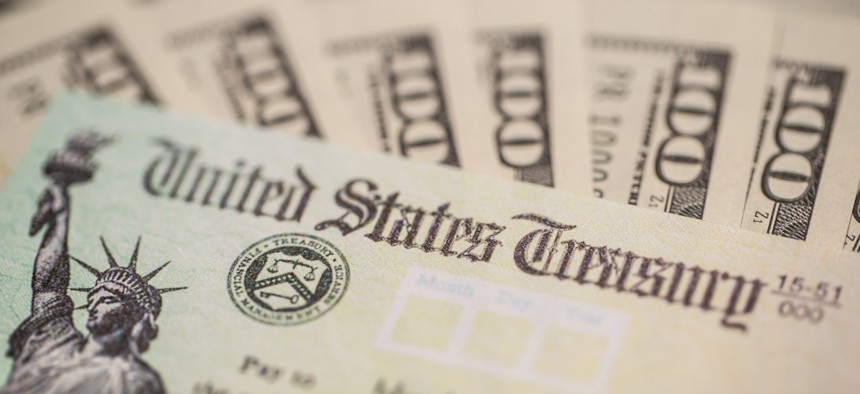When State and Local Governments Can Expect to Receive Stimulus Funds

iStock.com/LPETTET
The Treasury Department is still working on guidance that will better inform states of how they can use the money. But aid for cities and counties must be distributed within 60 days of the law’s passage.
It could be weeks before state and local jurisdictions begin receiving payments from the federal government as part of a $350 billion direct aid program included in the massive coronavirus relief bill passed this month.
Local governments are likely to begin receiving money before states, due to stipulations in the American Rescue Plan Act. The Treasury Department has 60 days from the law’s enactment to release the first tranche of funding to cities and counties—in this case a mid-May deadline.
“We have not heard major concerns about that timeline and how those funds will be administered,” said Eryn Hurley, associate legislative director at the National Association of Counties.
Once counties receive the money, Hurley expects they “will be able to use that very quickly and effectively.”
The process for states could take longer as the Treasury Department is still working on guidance that will help administer the payments. States are required to sign certification documents attesting they will spend the money only in certain ways prescribed by the law. Those documents have yet to be published, but after states certify, the department has 60 days to release initial aid payments to them.
Some state officials have already expressed concern over a last-minute addition to the law that restricts states from using the money to pay for tax cuts. Republican attorneys general have asked the Treasury Department for more clarity on how that mandate will be enforced.
The Treasury Department did not respond to repeated requests for comment on the timeline for distribution to state and local governments or progress on drafting guidance on the law for states.
“The real concern is when the guidance from the Treasury Department will come out. That is a total unknown," said Anna Horevay, an attorney at McGuire Woods who advises local governments on the relief bill.
It took weeks for the department to issue guidance for state and local governments on CARES Act money, Horevay said. Even then, guidance on how that funding could be spent kept changing, leaving officials unsure whether they could use the money for expenses like payroll costs for public safety workers.
“That created confusion,” Horevay said.
States are going to be cautious about how they use American Rescue Plan funds because the law allows the Treasury Department to claw back the money if it is not used in the ways required, she added.
The certification that state and local governments were required to sign for the CARES Act was a simple, one-page document. If the Treasury Department relies on a similar certification process, it would help streamline the process, Horevay said.
"Hopefully the certification is short and doesn’t take a lot of effort from the states' side to sign it and then they can start the 60-day clock ticking,” she said.
Local governments will receive $130 billion in direct aid, with the funding divided evenly between cities and counties. States and the District of Columbia will receive $195 billion.
The law divides the payments to local governments into two tranches of money. Cities and counties will receive 50% of the money initially and the other half of the money 12 months after the first payment. The Treasury Department can choose to withhold up to 50% of funding from states from its initial distribution, so with further guidance outstanding, it remains unclear whether states will receive payments in one or two tranches of money.
Andrea Noble is a staff correspondent with Route Fifty.
NEXT STORY: Republican State Officials Bristle Over Tax Cut Prohibition in Covid Relief Bill





